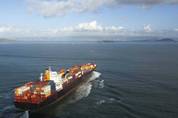
This page recently took a look at surplus in the bulkcarrier sector, and how it was impacted by theright speed for the market environment. In the containership sector, there also remains a significant level of surplus capacity, and here, if anything, speed is playing an even more critical role.In 2009 container trade experienced its first real major downturn, dropping by 9%. This created a huge surplus of capacity in a short period of time, which the containership sector has been struggling with ever since.The graph shows an estimate for the size of the ‘surplus’, calculated by assuming the ve
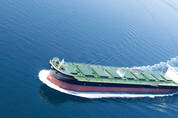
In recent years large crude tankers are down having taken a good kicking, and today punters don't seem to like the look of them. However, a survey of earnings in each major sector during the five years since the 2008 crash tells a slightly different story, which is worth looking at closely.To calculate an earnings ratio for each ship type since October 2008, average monthly earnings were divided by estimated operating expenses (OPEX). The result is a percentage showing earnings as a multiple of OPEX. For example 300% means that the average earnings was three times operating costs, a good resul
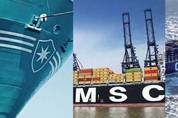
The P3 alliance between Maersk Line, Mediterranean Shipping Company and CMA CGM will have a significant impact on ports worldwide, but who will win and who will lose?The alliance partners aim to manage their east-west services as one fleet with a joint vessel operating centre, starting second quarter of 2014.The major advantages for the partners seem to be related to ports, rather than in operating vessels per se. If P3 were to jointly manage exactly the same services as the partners currently operate with the existing fleet, it is hard to see significant gains in operational efficiency.But on

The big issue (well, one of them) floating around the shipping market at the moment is the move to eco-ships. These technological marvels promise a step change in cost savings and environmental friendliness compared with their pre-crisis competitors. For example the latest Japanese Supramax offering does 14.5 knots on 28 tonnes per day. That sounds good, but how big a step up is that?The key is not so much out-performing modern ships; it's the thirsty old ladies that investors hope the new super-ships will drive from the market, accelerating the return to balance. But this depends on whether t
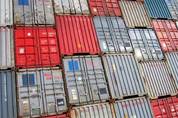
The International Maritime Organization today backed a compromise proposal for verifying the weight of containers before they are loaded on board ships.An IMO subcommittee approved draft guidelines allowing shippers two methods to verify the weight of a container as part of the London-based organization’s program to improve safety at sea. Shippers can either weigh a packed container, or weigh all packages and cargo items and then add the tare mass of an empty container.The Subcommittee on Dangerous Goods, Solid Cargoes and Containers also agreed to an exemption that would apply when containers
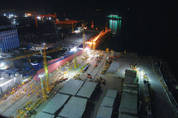
Amazing how the obvious doesn't always happen. When Lehman Bros collapsed 5 years ago banks stopped trading with each other, letters of credit became a nightmare, and the financial system was close to collapse. Against this background shipping analysts looked at the enormous shipbuilding orderbook and concluded that it wouldn’t be delivered.The problems seemed insurmountable. The orderbook was an enormous 584m dwt, 47% of the fleet, with a contract value of $542bn. The first obstacle was that the banks had too many problems with their existing ship loan portfolios to contemplate adding another
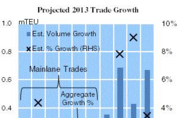
While intra-regional trade is likely to be the largest source of trade volume growth this year, the prospects for inter-regional trades remain diverse. The Graph of the Month shows the projected absolute volume growth in 2013 accounted for by a breakdown of routes, along with full year % growth forecasts.Mainlane trade growth is likely to remain relatively subdued this year, as the US and European economies struggle to achieve substantial growth. Westbound Far East-Europe trade grew by 1.1% in 1H 2013, and is expected to grow by 1.4% in full year 2013, adding just 0.19m TEU to last year’s tota

Maersk Line almost doubled its second quarter profit as above-target cost cuts, buoyed by lower fuel prices, more than offset sluggish growth in container volumes and a double-digit decline in freight rates.The world’s largest ocean carrier posted a net operating profit of $439 million in the three months through June, against $227 million in the same period in 2012.A.P. Moller-Maersk said it now expects its container shipping unit’s full year profit to be “significantly above” 2012, compared with an earlier forecast of “above” the $461 million it earned last year.“Maersk is now an industry le
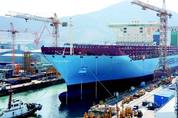
Containership building is dominated by South Korean and Chinese shipyards, who together accounted for 86% of the capacity on order at the start of July. South Korean yards have contracts for 1.76m TEU, while Chinese yards have just over a million TEU on their orderbook. However, until now the two key building nations have been largely focused on distinct size sectors, and have displayed differing delivery performance versus schedule.The Graph of the Month shows that containership building has become increasingly dominated by South Korean and Chinese yards, with Japanese shipyards in particular
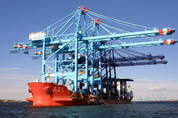
Awkwardly perched on cargo ships such as the Zhen Hua 24 are new and bigger cranes destined be installed at shipping ports around the world.The recent delivery of huge new containerships like CMA CGM Marco Polo and the 18,000 TEU Maersk Mc-Kinney Møller, as well as the expansion of the Panama Canal marks a new era of global container shipping, one that is requiring ports worldwide to supersize their cranes.APM Terminals released the following graphic today showing how container cranes have evolved in size over the years.APM notes that a number of their ports have been recently upgraded to hand